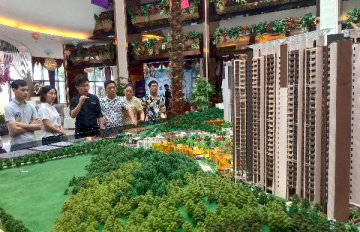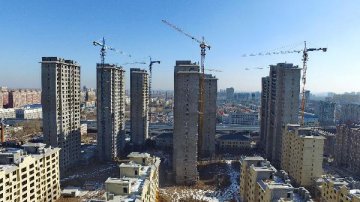
On Oct. 25, China Land Surveying and Planning Institute under the Ministry of Land and Resources released report on land price tracking in major cities across the country for the third quarter of 2016. Statistics show that growth rate of land prices all over China accelerates in the third quarter both on a year on year basis and month on month basis; the number of land with abnormal transaction, average premium rate and average bidding round all tend to increase, and there are more than 50 percent transaction with premium rate exceeding 50 percent. The report analyzes that the growth rate of residential land price in hot tier-1 and tier-2 cities will be adjusted in the short term and land price in tier-3 and tier-4 cities with higher inventories will be short of boosting power in the future.
According to the tracking data on land market in 105 major cities across the country based on the urban land price tracking system of China Land Surveying and Planning Institute, land price in China continues to move up moderately in the third quarter of this year and prices of land for comprehensive, commercial and residential use increase both on a year on year basis and month on month basis. Land price in major tracking cities is generally 3,767 yuan per square meter, and prices of land for commercial, residential and industrial use record 6,868 yuan per square meter, 5,781 yuan per square meter and 776 yuan per square meter.
In contrast, year-on-year growth rate of industrial land price slows down a little. In the third quarter, month-on-month growth rates in price of land for comprehensive, commercial and residential use in major tracking cities register 1.40 percent, 0.87 percent and 2.11 percent respectively, up by 0.11 percentage point, 0.25 percentage point and 0.16 percent point respectively when compared with those in the second quarter. Specifically, residential land price grows faster and comprehensive land price increases slowly.
In the third quarter, year-on-year growth rates in price of land for comprehensive, commercial, residential and industrial use in major tracking cities post 4.57 percent, 2.67 percent, 6.77 percent and 2.49 percent respectively, up by 0.54 percentage point, 0.20 percentage point, 1.04 percentage points and 0.02 percent point respectively when compared with those in the second quarter.. Specifically, comprehensive and residential land prices keep slower growth, and commercial and industrial land prices see stable fluctuation.
In terms of residential land price, the price in tier-one cities and some hot cities still moves up rapidly, while the price in most of tier-2 and tier-3 cities changes steadily, presenting remarkable market segmentation. As for detailed cities, comprehensive and residential land price in 105 major tracking cities continue to hike with price in 90 cities increasing month on month and price in 85 cities increasing year on year.
Noticeably, the number of land with abnormal transaction, average premium rate and average bidding round all tend to increase, and there are more than 50 percent transaction with premium rate exceeding 50 percent in the third quarter. As of Sept. 30, there are 176 cases of abnormal land transaction reported in many places (including 10 cases reported in tier-1 cities, 62 cases in tier-2 cities and 104 cases in tier-3 and tier-4 cites) in the third quarter, up by 79 cases or 81 percent when compared with that in the second quarter and up by 62 cases or 351 percent from a year earlier. Average premium rate records 187 percent, up by 64 percentage points when compared with that in the previous quarter and up by 73 percentage points year on year. There are 129 average bidding rounds, up by 23 rounds or 21 percent when compared with that in the second quarter and up by 49 rounds or 62 percent when compared with the same period of last year.
The report predicts that the land market will embrace stable performance along with increasing land supply. Under the background with unchanged trend in overall national policy, independently local policy and improved differentiation, the growth rate of residential land price in hot tier-1 and tier-2 cities will be adjusted in the short term and land price in tier-3 and tier-4 cities with higher inventories will be short of boosting power in the future.
Translated by Vanessa




















Latest comments